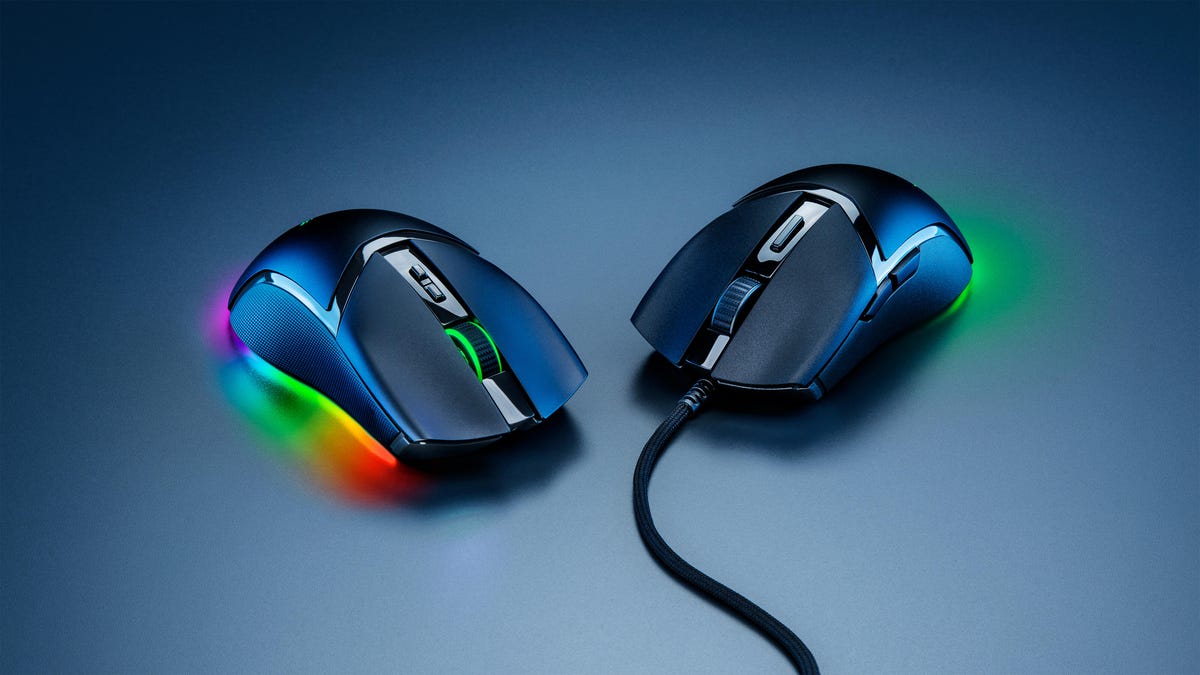 Why You Can Trust CNET
Why You Can Trust CNET Razer's Cobra Gaming Mice Take a Little Bit From Their Siblings
The new gaming mouse line morphs existing tech and design elements into an alternative for people who grip differently.

The Cobra Pro (left) and Cobra (right) mice.
Razer's new Cobra gaming mice are clearly born out of a melting pot of Razer's other models. They target the same mainstream gamers as the Basilisk line, but they include the more pared-down, lightweight build and fingertip and claw grip-friendly design elements of the symmetrical Viper V2 esports line.
With the launch of the mice, Razer introduces a clever new system for managing illumination to improve battery life. It's dubbed Smart Dimming: When you're using the mouse, your hand tends to cover some of the lighting zones (and you're probably not looking at the rest), so it will automatically dim the lights to a level you've selected.
The wired Cobra is the budget bro, at $40. As you'd expect, it strips a lot of the features from the Pro: It's got fewer lighting zones and a relatively low-resolution 8,500dpi (300IPS) sensor.
The wireless Cobra Pro pulls out all the stops for wireless operation, but rather than offering a middle model between the Pro and the wired budget Cobra, the Pro starts at $130 for the base 2.4GHz wireless and Bluetooth support (and USB wired operation). You can then bring it up to the full feature set by choosing which accessories you want.
A bundle with the Mouse Dock Pro (which includes the wireless puck attachment necessary for wireless charging) costs $170 and a bundle with the HyperPolling wireless dongle extender is $145. Either of those is necessary if you want to use the 4,000Hz polling rate; the bundled HyperSpeed dongle maxes out at the more common 1,000Hz. The bundles are exclusive to Razer.com and Razer stores.
But you don't have to buy in a bundle, so you can always upgrade later. The Qi-compatible charging puck which slips into a recess on the underside goes for $20, for instance, while the Mouse Dock Pro (which includes the puck) is $70. If you just want the faster polling rate, the HyperPolling Wireless Dongle runs $30.
The tech in the Cobra Pro is the same as the other "Pro" mice models, including the same Focus Pro 30,000dpi (750 IPS) sensor and Razer's third-generation optical switches. Its 77-gram weight falls between the ultralight Vipers and DeathAdders and the heavier Basilisks. It can store five profiles onboard (so that you don't have to run the Synapse utility all the time), offers 10 programmable controls and 11 lighting zones.
Rated battery life runs from a maximum of 170 hours on Bluetooth, 100 hours on standard 2.4GHz wireless and 33 hours using the 4,000Hz wireless. That's a big, but unsurprising, hit to take for the higher polling rate: increasing pings by 25% requires more power.

